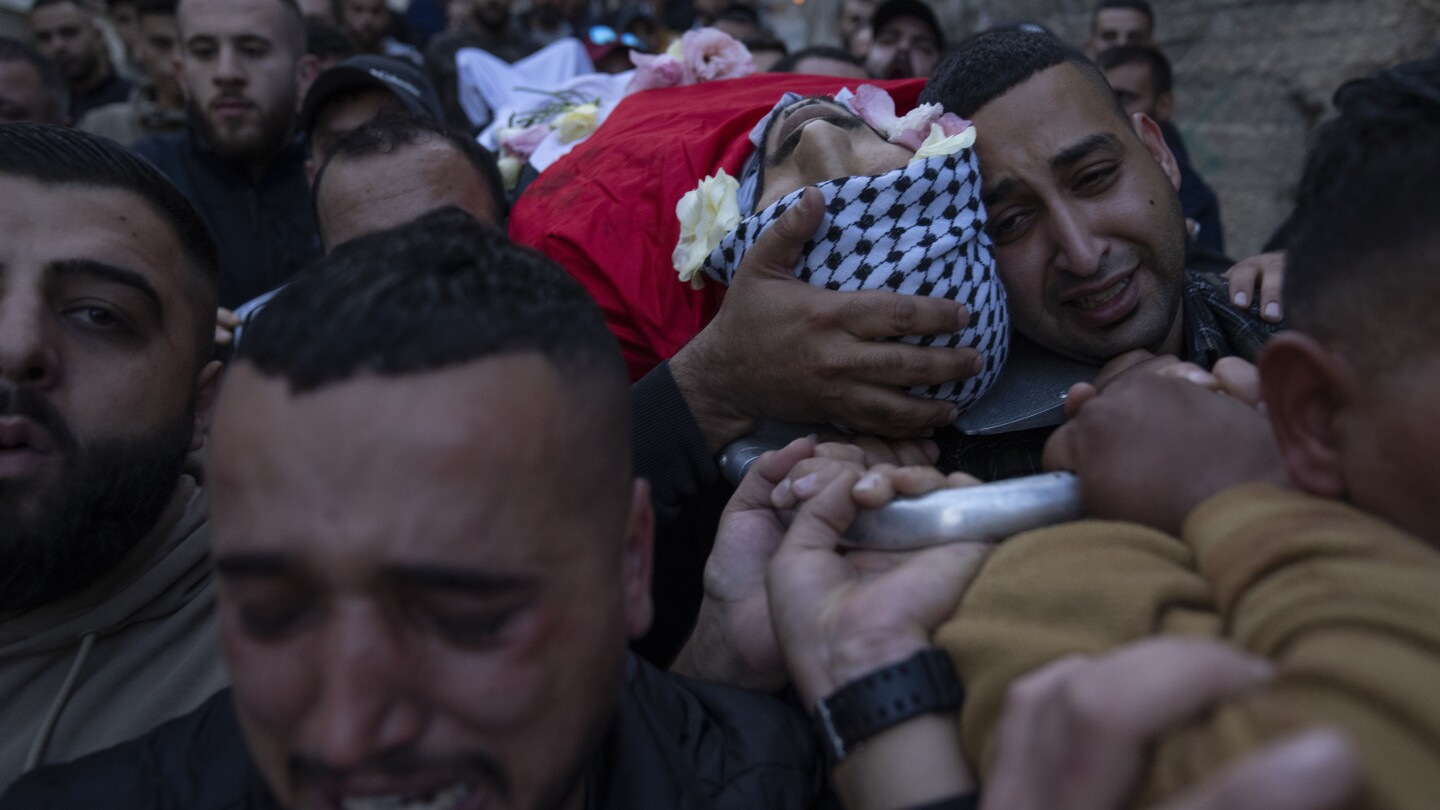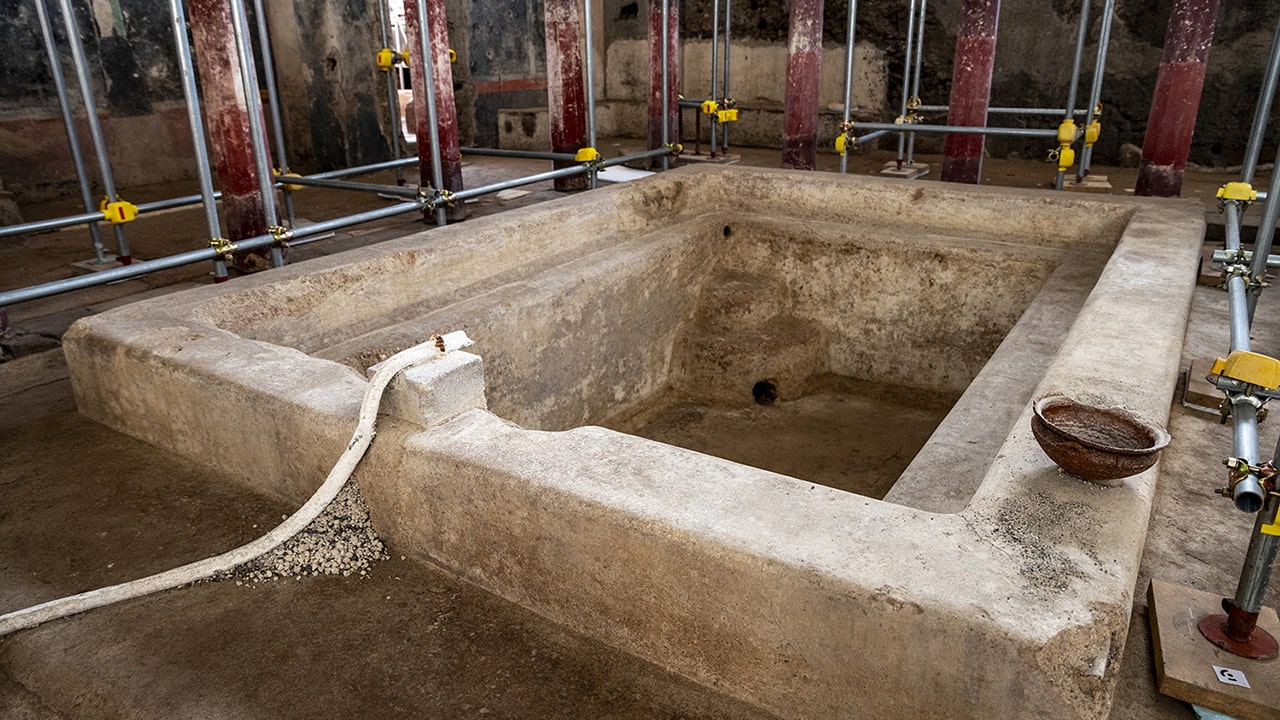World
Israel strikes in and around Gaza’s second largest city in an already bloody new phase of the war

KHAN YOUNIS, Gaza Strip (AP) — Israel intensified its bombardment in and around Gaza’s second largest city early Tuesday, as ambulances and private cars came racing into a local hospital carrying people wounded in a bloody new phase of the war in Gaza.
Under U.S. pressure to prevent further mass casualties, Israel says it is being more precise as it widens its offensive into southern Gaza after obliterating much of the north. Aerial bombardment and the ground offensive have already driven three-fourths of the territory’s 2.3 million people from their homes.
At the Nasser Hospital in Khan Younis, ambulances brought dozens of wounded people in throughout the night. At one point, a car pulled up and man emerged carrying a young boy in a bloody shirt and whose hand had been blown off.
“Where is the Red Cross? … where is the United Nations?” a woman screamed outside the emergency department. “My children, since 10 p.m., are still under the rubble.”
Satellite photos taken Sunday showed tanks and troops massing outside Khan Younis, the latest target of the offensive, which was home to more than 400,000 people before the war.
Israel has ordered people out of nearly two dozen neighborhoods instead of the entire region, as it did in the north. But with most of Gaza’s population already packed into the south, cramming U.N. shelters and family homes, there are few places left to go. Israel has barred people who fled the north earlier in the war from returning.
Palestinians say that as Israel continues to strike across the besieged territory, there are no areas where they feel safe, and many fear that if they leave their homes they will never be allowed to return.
THE QUEST TO ELIMINATE HAMAS
Israel says it must dismantle Hamas’ extensive military infrastructure and remove it from power in order to prevent a repeat of the Oct. 7 attack that ignited the war. The surprise assault through the border fence saw Hamas and other Palestinian militants kill about 1,200 people, mostly civilians, and capture some 240 men, women and children.
The Israeli military says it makes every effort to spare civilians and accuses Hamas of using them as human shields as it fights in dense residential areas, where it has a labyrinth of tunnels, bunkers, rocket launchers and sniper nests.
But the militant group is deeply rooted in Palestinian society, and its determination to end decades of open-ended Israeli military rule is shared by most Palestinians, even those opposed to its ideology and its attacks on Israeli civilians. That will complicate any effort to eliminate Hamas without causing massive casualties and displacement.
Even after weeks of unrelenting bombardment, Hamas’ leaders in Gaza were able to conduct complex cease-fire negotiations and orchestrate the release of more than 100 Israeli and foreign hostages in exchange for 240 Palestinian prisoners last week. Palestinian militants have also kept up their rocket fire into Israel, both before and after the truce.
The fighting has meanwhile brought unprecedented death and destruction to the coastal strip.
The Health Ministry in Gaza said the death toll in the territory since Oct. 7 has surpassed 15,890 people – 70% of them women and children — with more than 42,000 wounded. The ministry does not differentiate between civilian and combatant deaths. It says hundreds have been killed or wounded since the cease-fire’s end, and many still are trapped under rubble.
An Israeli army official provided a similar figure for the death toll in Gaza on Monday, after weeks in which Israeli officials had cast doubt on the ministry’s count. The official said at least 15,000 people have been killed, including 5,000 militants, without saying how the military arrived at its figures. The military says 84 of its soldiers have been killed in the Gaza offensive.
White House national security adviser Jake Sullivan said Monday that it was too soon to pass judgment on Israeli operations, but that it was unusual for a modern military to identify precise areas of expected ground maneuvers and ask people to move out, as Israel has done in Khan Younis.
“These are the kinds of steps that we have asked them to undertake.” he said. “These are the conversations we’re having day in, day out.”
The U.S. has pledged unwavering support to Israel since the Oct. 7 attack, including rushing weapons and other aid to the country.
Airstrikes and the ground offensive in northern Gaza have reduced large swaths of Gaza City and nearby areas to a rubble-filled wasteland. Hundreds of thousands of residents fled south during the assault.
Now around 2 million people — most of the territory’s population — are crowded into the 230 square kilometers (90 square miles) of southern and central Gaza. Since the truce’s collapse, the military has ordered the population out of an area of about 62 square kilometers (24 square miles) in and near Khan Younis, according to the evacuation maps issued by the Israeli military.
That further reduces the space available for Palestinians by more than a quarter.
KHAN YOUNIS IN THE CROSSHAIRS
Satellite photos from Sunday, analyzed by The Associated Press early Tuesday, show around 150 Israeli tanks, armored personnel carriers and other vehicles just under 6 kilometers (3.7 miles) north of the heart of Khan Younis. The army did not respond to a request for comment and rarely publicizes troop deployments.
Constant bombardment on the edge of Khan Younis lit up the sky over the town Monday evening.
Over the past few days, Israeli strikes have been “on a ferocious scale,” said Mohammed Aghaalkurdi, an aid worker with the group Medical Aid for Palestinians in Khan Younis.
He said neighborhoods and shelters were emptying as people fled. Leaflets dropped by the Israeli military warn people to go south toward the border with Egypt, but they are unable to leave Gaza, as both Israel and neighboring Egypt have refused to accept any refugees.
Adding to the chaos, phone and internet networks across Gaza collapsed again Monday evening, the Palestinian telecom provider PalTel said. It was the latest of several outages that have complicated rescue efforts. Communications were restored hours later.
The area that Israel ordered evacuated covers about a fifth of Khan Younis. Before the war, that area was home to some 117,000 people, and now it also houses more than 50,000 people displaced from the north, living in 21 shelters, the U.N. said. It was not known how many were fleeing.
Israeli media also reported intense fighting between Israeli troops and Hamas militants in northern Gaza — in the Jabaliya refugee camp, a built-up urban area, and in the Gaza City district of Shijaiya, both of which have seen intense bombardment and battles in recent weeks.
___
Magdy reported from Cairo. Associated Press writer Jon Gambrell in Dubai, United Arab Emirates, contributed.
___
Full AP coverage at https://apnews.com/hub/israel-hamas-war.

World
Cartier owner Richemont posts 10% increase in Q3 sales

World
Ancient Pompeii excavation uncovers lavish private bath complex

Archaeologists have unearthed a lavish private bath complex in Pompeii, highlighting the wealth and grandeur of the ancient Roman city before it was destroyed by Mount Vesuvius in AD 79, the site said on Friday.
The baths, featuring hot, warm and cold rooms, could host up to 30 guests, allowing them to relax before heading into an adjacent, black-walled banquet hall, decorated with scenes from Greek mythology.
ITALY’S ANCIENT POMPEII PARK CRACKS DOWN ON DAILY VISITORS TO COMBAT OVERTOURISM
The pleasure complex lies inside a grand residence that has been uncovered over the last two years during excavations that have revealed the opulent city’s multifaceted social life before Vesuvius buried it under a thick, suffocating blanket of ash.
A central courtyard with a large basin adds to the splendour of the house, which is believed to have been owned by a member of Pompeii’s elite in its final years.
“This discovery underscores how Roman houses were more than private residences, they were stages for public life and self-promotion,” said Gabriel Zuchtriegel, director of the Pompeii Archaeological Park.
The private thermal baths complex discovered by archaeologists in a villa of the ancient city of Pompeii is seen in Pompeii, Italy, in this undated handout picture released on January 17, 2025. (Pompeii Archeological Park/Ministry of Cultural Heritage and Activities and Tourism/Handout via REUTERS )
Zuchtriegel said the layout recalled scenes from the Roman novel “The Satyricon”, where banquets and baths were central to displays of wealth and status.
Decorated with frescoes, the complex draws inspiration from Greek culture, emphasizing themes of leisure and erudition.
“The homeowner sought to create a spectacle, transforming their home into a Greek-style palace and gymnasium,” Zuchtriegel said.
The remains of more than 1,000 victims have been found during excavations in Pompeii, including two bodies inside the private residence with the bathhouse – a woman, aged between 35-50, who was clutching jewellery and coins, and a younger man.
The discovery of their bodies was announced last year.
World
‘Fields were solitary’: Migration raids send chill across rural California

Los Angeles, California — Recent raids carried out by the United States Customs and Border Protection (CBP) in a rural California county have struck fear into immigrant communities as President-elect Donald Trump prepares to return to the White House.
CBP says that the operation in Kern County, which took place over three days in early January, resulted in the detention of 78 people. The United Farm Workers (UFW) union says it believes the number is closer to 200.
“The fields were almost solitary the day after the raids,” a 38-year-old undocumented farmworker named Alejanda, who declined to give her last name, said of the aftermath.
She explained that many workers stayed home out of fear. “This time of year, the orchards are usually full of people, but it felt like I was by myself when I returned to work.”
The raids are being seen by local labourers and organisations like UFW as a shot across the bow from immigration enforcement agencies before Trump’s inauguration on Monday.
His second term as president is expected to ring in a new era of enhanced restrictions and deportation efforts.
While the number of people arrested represents a small fraction of the hundreds of thousands of undocumented workers underpinning California’s agricultural sector, the anxieties caused by such raids extend far beyond those detained.
“On Wednesday [the day after the raids], I stayed home from work. I barely left my house,” said Alejanda, adding that she kept her five-year-old son home from daycare rather than risk driving to drop him off.
“Everyone is talking about what happened. Everyone is afraid, including me. I didn’t actually see any of the agents myself, but you still feel the tension.”
Emboldened agencies
Following a presidential campaign where he routinely depicted undocumented migrants as “criminals” and “animals”, Trump will likely try to fulfill his promise to carry out the “largest deportation programme” in the country’s history on his first day in office.
About 11 million people live in the United States without legal documentation, some of whom have worked in the country for decades, building families and communities.
The January arrests in Kern County appear to be the first large-scale Border Patrol raid in California since Trump’s victory in the November election, which set off speculation about the potential impact of mass deportations on immigrant communities and the economic sectors dependent on their labour.
About 50 percent of California’s agricultural workforce is made up of undocumented immigrants.
In California, undocumented status has been cited as a source of persistent anxiety for workers — as well as a means of leverage for employers, who often pay such labourers lower wages and grant them fewer protections in the fields.
But Alejanda says that workplace raids like the ones that took place in Kern County have not been common in the area.
“I have been here for five years and never experienced anything like this before,” she said, noting that workers were detained while leaving the fields to go home.
CBP said in a statement that the operation, named “Return to Sender”, had targeted undocumented people with criminal backgrounds and connections to criminal organisations.
#WeFeedYou pic.twitter.com/8e6GE9RRkK
— United Farm Workers (@UFWupdates) January 11, 2025
The raids were carried out by agents from the CBP El Centro Sector, located near the border between Mexico and southern California, more than five hours by car from the site of the raids.
“The El Centro Sector takes all border threats seriously,” Chief Patrol Agent Gregory Bovino said in a press release. “Our area of responsibility stretches from the US/Mexico Border, north, as mission and threat dictate, all the way to the Oregon line.”
Antonio De Loera-Brust, a spokesperson for UFW, said that the operation shows that agencies like CBP are likely to become more aggressive as Trump takes office.
He also disputed CBP’s characterisation of the raids as focused on people with criminal records, saying that the operation cast a wide net and profiled people who looked like farmworkers.
Two of those arrested were UFW members, whom the organisation described as fathers who had lived in the area for more than 15 years.
“By operating over 300 miles north of the Mexican border, and apparently conducting this untargeted sweep based on profiling on their own initiative and authority, Border Patrol has shown itself to be clearly emboldened by a national political climate of hostility towards hard-working immigrant communities,” De Loera-Brust told Al Jazeera.
“It’s certainly deeply concerning that this sort of operation could be the new normal under the incoming Trump administration.”
-
/cdn.vox-cdn.com/uploads/chorus_asset/file/25822586/STK169_ZUCKERBERG_MAGA_STKS491_CVIRGINIA_A.jpg)
/cdn.vox-cdn.com/uploads/chorus_asset/file/25822586/STK169_ZUCKERBERG_MAGA_STKS491_CVIRGINIA_A.jpg) Technology1 week ago
Technology1 week agoMeta is highlighting a splintering global approach to online speech
-

 Science7 days ago
Science7 days agoMetro will offer free rides in L.A. through Sunday due to fires
-
/cdn.vox-cdn.com/uploads/chorus_asset/file/23935558/acastro_STK103__01.jpg)
/cdn.vox-cdn.com/uploads/chorus_asset/file/23935558/acastro_STK103__01.jpg) Technology6 days ago
Technology6 days agoAmazon Prime will shut down its clothing try-on program
-

 News1 week ago
News1 week agoMapping the Damage From the Palisades Fire
-

 News1 week ago
News1 week agoMourners Defy Subfreezing Temperatures to Honor Jimmy Carter at the Capitol
-
/cdn.vox-cdn.com/uploads/chorus_asset/file/25826211/lorealcellbioprint.jpg)
/cdn.vox-cdn.com/uploads/chorus_asset/file/25826211/lorealcellbioprint.jpg) Technology6 days ago
Technology6 days agoL’Oréal’s new skincare gadget told me I should try retinol
-
/cdn.vox-cdn.com/uploads/chorus_asset/file/25832751/2192581677.jpg)
/cdn.vox-cdn.com/uploads/chorus_asset/file/25832751/2192581677.jpg) Technology3 days ago
Technology3 days agoSuper Bowl LIX will stream for free on Tubi
-

 Business4 days ago
Business4 days agoWhy TikTok Users Are Downloading ‘Red Note,’ the Chinese App


















